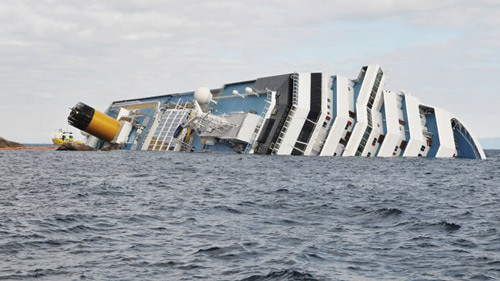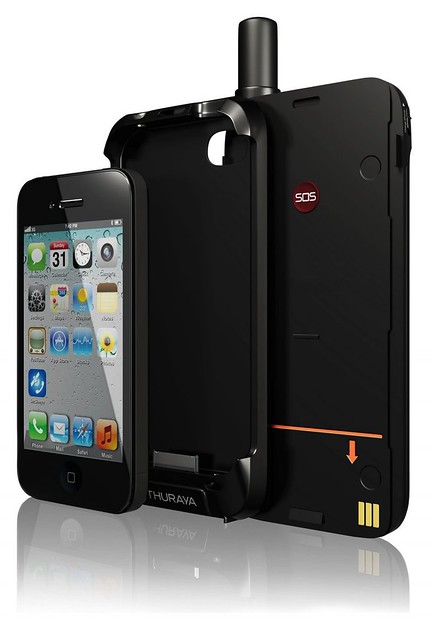Posts Tagged ‘inmarsat’
Black Eye for Satcom at Black Hat?
Monday, August 4th, 2014This week, at Black Hat USA in Las Vegas, Ruben Santamarta is to present his findings of how he was able to hack satcom terminals, at least in theory.

At first glance, especially with lots of alarming details from DailyTech, you’d think the party for in-flight WiFi via satcom was over. Their piece was based on a Reuters story, which wasn’t as frightening.
The theoretical hack involves low-bandwidth services using Inmarsat and Thuraya. In-flight broadband uses more bandwidth and wasn’t really included in the study. Managing unmanned terminals is common in this industry segment.
Take a look at the white paper (PDF) published by IOActive and see for yourself. You can be sure all those mentioned in the 25-page report are asking their engineers if this is indeed possible.
I wouldn’t worry about it much.
Inmarsat’s Relevancy
Tuesday, March 25th, 2014
Inmarsat’s been around since 1979, operating geosynchronous communications spacecraft using the S-band. Compared to the GPS system, not overly glamorous. In the maritime satcom market, they’re the biggest fish in the pond.
With the current attention focused on how this old satellite company using standard physics to help locate the lost Malaysian airliner, they should become better known.
They’re on it, mate.
Here’s the story in The Malaysian Insider…
Britain’s Inmarsat used a wave phenomenon discovered in the 19th century to analyse the seven pings its satellite picked up fromMalaysia Airlines Flight MH370 to determine its final destination.
The new findings led Malaysian Prime Minister Najib Razak to conclude on Monday that the Boeing 777, which disappeared more than two weeks ago, crashed thousands of miles away in the southern Indian Ocean, killing all 239 people on board.
The pings, automatically transmitted every hour from the aircraft after the rest of its communications systems had stopped, indicated it continued flying for hours after it disappeared from its flight path from Kuala Lumpur to Beijing.
From the time the signals took to reach the satellite and the angle of elevation, Inmarsat was able to provide two arcs, one north and one south that the aircraft could have taken.
Inmarsat’s scientists then interrogated the faint pings using a technique based on the Doppler effect, which describes how a wave changes frequency relative to the movement of an observer, in this case the satellite, a spokesman said.
The Doppler effect is why the sound of a police car siren changes as it approaches and then overtakes an observer.
Britain’s Air Accidents Investigation Branch was also involved in the analysis.
“We then took the data we had from the aircraft and plotted it against the two tracks, and it came out as following the southern track,” Jonathan Sinnatt, head of corporate communications at Inmarsat, said.
The company then compared its theoretical flight path with data received from Boeing 777s it knew had flown the same route, he said, and it matched exactly.
The findings were passed to another satellite company to check, he said, before being released to investigators on Monday.
The paucity of data – only faint pings received by a single satellite every hour or so – meant techniques like triangulation using a number of satellites or GPS (Global Positioning System) could not be used to determine the aircraft’s flight path.
They did a fine job with their corporate video, too. Standard concept of a “timeline” script, yet executed brilliantly.
Thuraya Heep
Thursday, May 23rd, 2013
Ah, integrating an iPhone with satellite services. We’ve been after that for years and I’m sure we’ll see both talk, text, broadband data and TV — some by satcom, but mostly by terrestrial (GSM, CDMA, LTE, whatever). Dish Network will be the first.
When you’re out in the wilderness, you wish you could connect by satellite. The first was TerreStar with their Genus a few years ago. That sold for $1,100+ back then — which was nuts.
Thuraya had their system — using GSM and satellite when signal was unavailable — up and running in deserts of Asia and Africa since 2001. How many handsets have they sold? Would you believe 600,000? That’s right: it took 12 years to sell that many — and I don’t think you’re counting net handsets in use today (churn, upgrades, etc., over the years). The new boss from Michigan is really getting this moving.
A couple of months ago, they introduced SatSleeve — an enclosure, battery supplement and satellite transceiver. It costs around $650 and probably many dollars per minute to use.
Sorry I wasn’t paying attention, but I had a lot going on. I think this is a brilliant product and I hope they sell a ton of them. It takes a big thinker from Detroit to make it happen.
Just in time for the magician’s birthday.
Satcom’s Responsibility
Thursday, March 24th, 2011
The scale of the disaster in Japan, who some have compared to “four Katrinas,” is as mind-boggling today as it was a week ago. The automatic reaction in the satcom community was one of “ready, set, go” — let’s get our satcom systems turned up to help with communications efforts. The ITU cobbled together a bunch of satellite phones and terminals, et. al. as quickly as it could…
Among material already deployed are 78 Thuraya satellite phones equipped with Global Positioning System (GPS) technology to facilitate search and rescue efforts, along with 13 Iridium satellite phones and 37 Inmarsat Broadband Global Area Network terminals. An additional 30 Inmarsat terminals are ready for dispatch. The equipment can be charged by car batteries and are supplied with solar panels to enable operations during power outages.
This may seem as if it’s not nearly enough to help, but you should also consider the response inside Japan. Only yesterday did the Ofunato City Hall get a much-needed satcom connection via the KIKU No. 8 (ETS-VIII) mobile satellite system…
On March 24, JAXA set up a ground antenna and the movable test communication terminal for the KIKU
No. 8 at the Ofunato City Hall to connect the communication line of up to 768 Kbps between the City Hall and the Tsukuba Space Center via KIKU No. 8 in cooperation with the National Institution of Information and Communications Technology (NICT) based on a request from the Ministry of Education, Culture, Sports, Science and Technology, which received a petition from Ofunato City, Iwate Prefecture.
With this communication line installation, Ofunato City Hall workers began collecting information by PCs through the Internet. Apart from city hall, local fire departments and other offices can also now use the Internet and IP telephones to share information for strengthening their cooperative activities.
In addition, as one of the special features of the KIKU No. 8 is communications with a small movable test terminal, which was installed at Ofunato City, information dispatch from evacuation centers and other places through the Internet became possible, because it is easy to move around and install it. Therefore, the connection this time is expected to further contribute to a smooth recovery from the disaster.

Simply getting these terminals out to where they were needed took time — and to find power sources. Most can be powered by a car battery, but they weren’t easy to find. Having a handheld unit is wonderful, until you need to recharge. As many found during last winter’s storm and subsequent power outages in the U.S., you could maintain your Internet connection/communication with an iPhone — only you’d be charging it in your car. In Japan, you car may have been washed away or buried under tons of debris, miles away. So that’s not an option.

Nobody could have predicted this type of utter destruction of property and the communications and power-transmission systems failures. The challenge of preparing satcom systems to respond effectively is to make sure there’s capacity available to meet the demand. As with the REDiSat Network, developed by SES Americom in response to Hurricane Katrina in 2006, nobody wants to pay for capacity that’s not needed. Full-time customers are ready to today, so they fill up the spectrum for their businesses. You can’t simply bump them to make room for emergencies when they have hundreds of customers depending on it for their livelihood.
That’s when the government needs to step in and help foot the bill. Help the satcom operators keep satcom inventory ready to deploy in case of emergency, only not at the target 80% EBITDA margins. A reluctance to part with capacity at a lower profit margin caused the REDiSat Network to fade away. Designing, building, testing, launching and operating a satcom spacecraft is expensive and they do serve the public well.
Broadcasters’ reliance on — and willingness to pay for — satcom systems is a wonderful arrangement. It’s magic: an infinite number of receivers for video and a good source of cash flow for the satellite operators. Keeps a lot of rocket scientists employed, too. As good corporate citizens, shouldn’t some of the profits be set aside to provide satcom capacity when needed?
I’m sure the accountants can find a way to pay for it.
Anybody who has capacity available in the region is likely booking it for TV news. Only SKY Perfect JSAT has any meaningful response (opens in PDF) …
As a measure for supporting post-disaster recovery, we are allocating necessary transponders capacity to anti-disaster organs, etc. and preparing for aid measure one by one. At present, the number of applications for subscription is increasing steeply. We are dealing with it as follows: For recovery assistance, we will immediately conduct what we can do with our communication satellite. We hope that the devasted area will be restored soon.
About the use of satellite communication services
- We will first distribute transponders to the institutions for post-disaster recovery, such as National Police Agency, the Ministry of Defense, related ministries, Telecommunication carriers and the U.S. military.
- As for the use of bands by electric power companies, including TohokuElectric Power, we will assist them proactively and give priority to them to allocate the cacant bands of Superbird-B2 owned by SKY Perfect JSAT
- As for the steep increase in the use by media organizations, we will deal with it thoroughly, and as for new subscriptions, we will allocate the band of JCSAT-5A, which has some room.
Where are the “we’re helping” press releases from the major satcom players?
